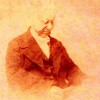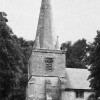The parish of Pilsdon is in the west of the county, rubbing shoulders with Devon. Approached by the narrowest of country lanes its quiet and remote location means it is well of the track beaten by the general tourist but one well trodden by walkers. Those who say it is a little place of no significance would be right but we should not deny Pilsdon its brushes with history and celebrity.
Towering over 900 feet above the village is the treeless Pilsdon Pen, with its wonderful views south to the English Channel and south east across the Marshwood Vale. Its tiny hamlets, farms and lush pastureland giving the impression that time stands still in these parts. At the top of the Pen is an Iron Age fort. Excavations in the 1960’s revealed the banks cover a number of rectangular buildings which enclose and lie over a series of hut circles. There are also the remains of an earlier rampart and a medieval rabbit warren.
The village itself comprises St. Mary’s Church and a 17th century manor house, both now in the ownership of the Anglican Pilsdon Community; furthermore there are some agricultural buildings and a few cottages.
When King Charles II fled the field of battle at Worcester he came this way; elsewhere on the Dorset Ancestors website we tell the story of “When the King Came to Stay” with Colonel Wyndham, who hid the King in his home at Trent and helped him escape the Roundheads pursuing him.
Fired up with the knowledge there was a prize of £1,000 on the King’s head, the Roundheads in hot pursuit stormed into west Dorset and on towards Dorchester. This hapless bunch learnt that the King had not come this way at all but was holed up with the Wyndham family disguised as a woman. They turned around and headed back west to Pilsdon and more specifically the manor house of the Royalist High Court Judge, Sir Hugh Wyndham, uncle of Colonel Wyndham.
Believing the King to be hiding in the house they burst in on the family, ordering Sir Hugh, his Lady, his daughters and his servants into the hall, while they ransacked the house searching every room, wardrobe and cupboard, turning over every one of the ladies pretty gowns as they went in vain about their business oblivious of the fact they were in the wrong house. By all accounts Sir Hugh was not afraid to voice in colourful language his opinion of the intruders.
One writer in the early 20th century prophetically described Pilsdon as a retreat. The Pilsdon Community set up here in 1958; it is an Anglican organisation living quietly here and providing a welcome retreat for the weary soul to rest, take stock and recharge. They own the 17th century manor house.
In 1983 St. Mary’s church was declared redundant and a year later it was purchased by The Pilsdon Community. Now independent it is no longer a parish church but it is a house of God where prayer and worship continues daily. The 13th century church dedicated to St Mary was rebuilt in 1830, restored in 1875 and more recently was restored again after fire damage, it still retains some of the features from the earlier medieval church.
The poet William Wordsworth and his sister Dorothy lived at Racedown Farm for a time. For the full story of their time in the area, read our article ‘Wordsworth at Racedown,’ which can be found in the Pilsdon category.



